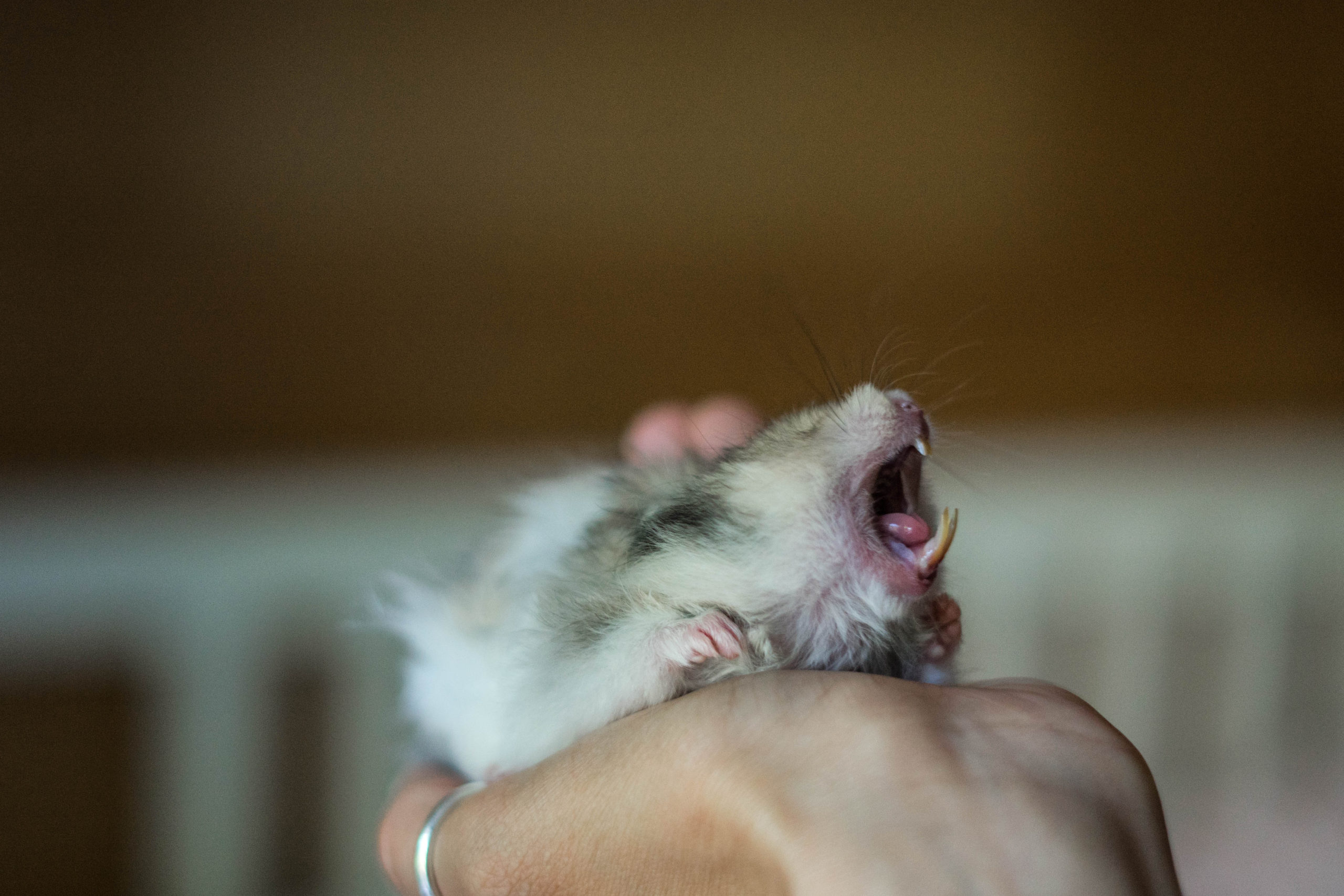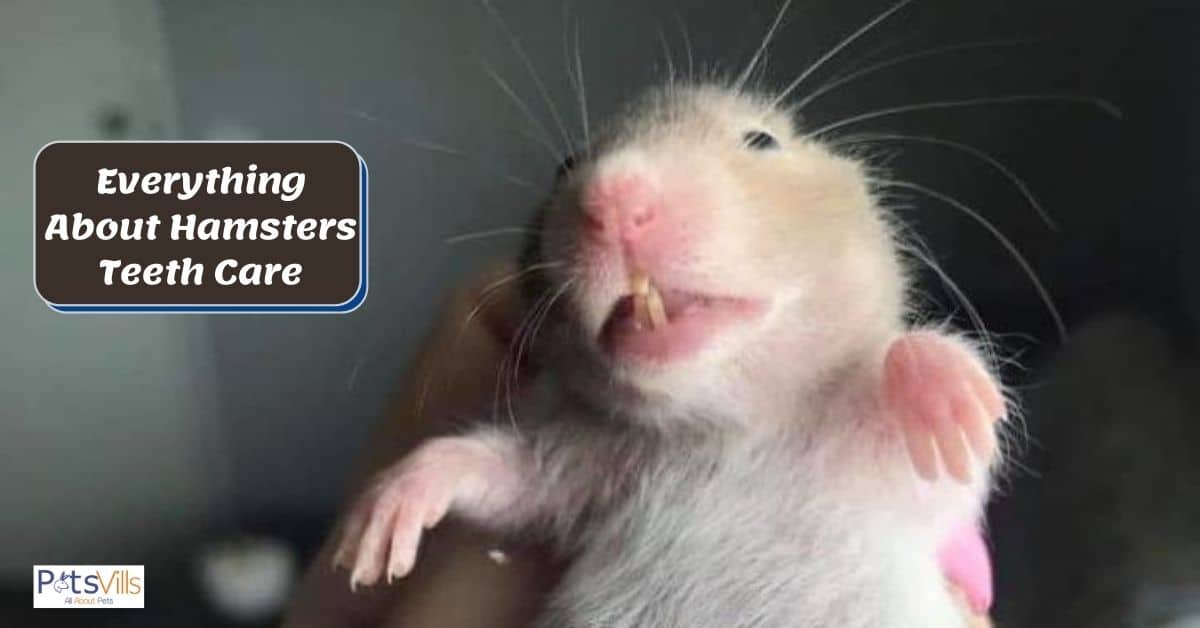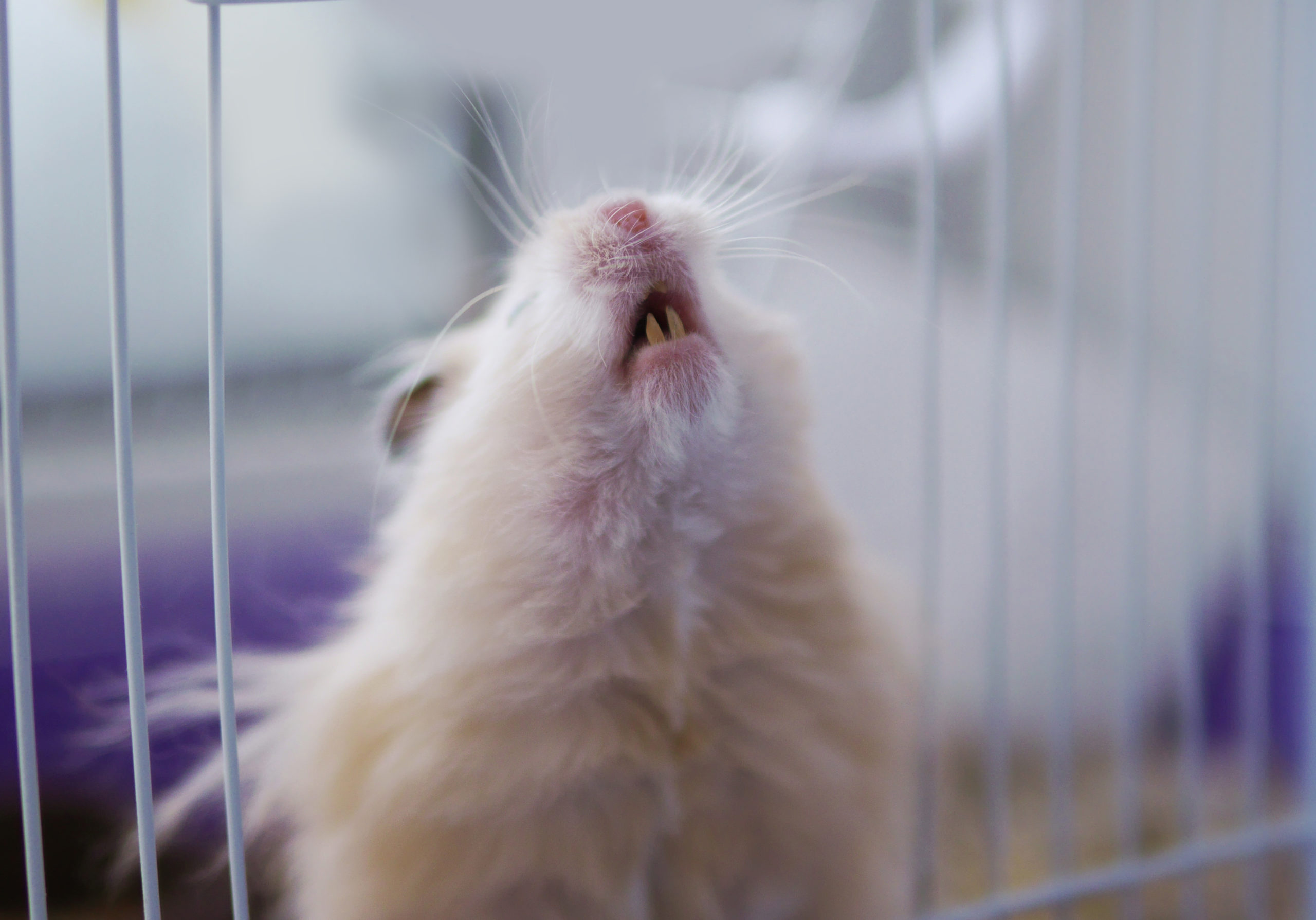As pet owners, we often forget about our furry little friends’ dental health. But did you know that hamsters also require dental care just like us? In this blog post, we’ll discuss some common dental issues hamsters may face and how to prevent and treat them. Keep your hamster’s smile healthy and happy with these tips!

1. Understanding Hamster Dental Health
Understanding Hamster Dental Health is crucial for any hamster owner. As mentioned in previous sections, hamsters’ incisors continue to grow throughout their lives, which makes dental problems or tooth damage an inevitable possibility. It is essential to monitor your hamster’s dental health closely and identify any symptoms that may indicate dental problems. These symptoms may include decreased appetite, excessive drooling, weight loss, and messy eating habits.
Proper nutrition and a balanced diet, along with appropriate gnawing opportunities, can prevent dental problems in your hamster. Neglecting your hamster’s dental health can lead to serious complications and even death. Therefore, prevention, early diagnosis, and professional treatment are critical in ensuring that your furry friend lives a long, healthy life.

2. Overgrown Teeth: Causes and Symptoms in Hamsters
Hamster dental issues are a common problem, and overgrown teeth are one of the most prevalent issues that hamsters face. The cause of overgrown teeth is usually due to inadequate use of the teeth, such as a diet that is deficient in hard foods for gnawing. Symptoms of overgrown teeth include difficulty closing the mouth, drooling, and a poor appetite. The teeth can become so overgrown that they protrude into the nasal cavity, causing further problems. Neglecting your hamster’s dental health can lead to serious consequences, such as tooth decay and infections.
As an owner, it is your responsibility to ensure your hamster’s dental health is maintained, and this can be achieved through a balanced diet and frequently checking their teeth. If you notice any signs of dental issues, it’s important to seek treatment from a veterinarian.

3. The Dangers of Neglecting Your Hamster’s Dental Health
It cannot be stressed enough how important it is to pay attention to your hamster’s dental health. Neglecting it can lead to serious consequences that can even lead to death. Overgrown teeth can cause trauma, anorexia, and difficulty in chewing and swallowing food. Additionally, untreated broken teeth can become a source of infection and pain for your furry little friend.
These issues can be prevented by regularly checking your hamster‘s teeth and providing them with appropriate food and toys to promote healthy chewing habits. Dental health should not be taken lightly, as it affects the overall health and happiness of your pet.

4. How to Prevent Overgrown Teeth in Hamsters
To prevent overgrown teeth in hamsters, it is important to maintain a balanced diet that is rich in fiber content, offering numerous opportunities for gnawing or biting. Feeding your hamster on high-quality, crispy foods such as hay, fresh vegetables, or treats made from wood or rubber will provide the ideal mediums to wear down their teeth naturally. Regular dental check-ups and trimming by professionals if necessary will also help to keep your hamsters’ teeth in good shape, even if they are prone to overgrowth due to factors such as their breed or age.
It is crucial not to delay visits to the veterinarian if symptoms such as drooling, difficulty eating, or reluctance to play, arise, as untreated dental issues can lead to other serious health complications in your furry friend in the long run. By adhering to the recommended preventive measures, you can ensure your hamster’s dental health remains top-notch, and their overall well-being optimized.

5. Treatment Options for Hamsters with Dental Issues
When it comes to treating dental issues in hamsters, there are a variety of options available. The first step is to take your hamster to an experienced veterinarian who specializes in small pets. The vet may suggest a dental procedure to trim or file the overgrown teeth. Anesthesia may be used to ensure the procedure is safe and pain-free for your hamster. If your hamster is experiencing pain or discomfort, your vet may prescribe medication to alleviate these symptoms. Additionally, your vet may recommend adjusting your hamster’s diet to include more crunchy and fibrous foods to help prevent future dental problems.
Remember, prevention is always better than treatment, so be sure to take regular measures to keep your hamster’s teeth healthy, such as providing gnawing opportunities and a balanced diet. With proper care and attention, your little furry friend will have a healthy set of teeth and a happy life.
6. Signs of Infected Teeth and Gums in Hamsters
Nobody ever wants to think anything could be wrong with their beloved pet, but it’s important to be aware of the potential signs of infection in any animal. When it comes to hamsters one of the most common infections is tooth and gum disease. Having knowledge of the symptoms of infected teeth and gums in your furry friend can help you catch it early and put preventative measures in place. This article will take a look at the signs of infected teeth and gums in hamsters and the steps you can take to keep them healthy. Though small, your hamster’s teeth and gums are very important. Hamsters are omnivores, meaning they need to eat both plants and meat.
Their front teeth—also known as incisors—are used to cut through vegetables, fruits, and other food items. The back molars are used to grind down more difficult items like seeds and nuts. Without healthy teeth and gums your hamster would not be able to break down their food efficiently, resulting in malnourishment and even death. But how can you tell if your furry friend has infected teeth or gums? Let’s explore the signs to look out for.

7. Dealing with Misshapen or Broken Teeth in Hamsters
When a hamster has misshapen or broken teeth, it can be harder to correct than overgrown teeth. However, it is still possible under the right circumstances. If a tooth is only slightly misaligned, it may correct itself over time. Otherwise, your veterinarian may suggest trimming or filing it down. If a tooth is fully broken, your veterinarian may suggest dental surgery to remove it. It’s important to address misshapen or broken teeth promptly as they can cause pain and difficulty eating.
A balanced diet and proper chewing toys can help prevent these issues from occurring, but occasionally genetics or accidents can lead to dental problems in hamsters. Remember to inspect your hamster’s teeth weekly and seek veterinary care if necessary to ensure your furry friend’s dental health.

8. The Importance of a Balanced Diet for Hamster Dental Health
A balanced diet is crucial for hamster dental health. Hamsters should be fed commercially available and nutritionally complete rodent pellets supplemented with small amounts of fresh fruits and vegetables. If your hamster is struggling to eat, you can feed them soft foods such as bread, eggs, wet cereal or softened hamster mix. It’s important to observe your hamster’s food intake as they tend to hoard food in a corner. A lack of calcium in the diet might lead to dental caries in hamsters, therefore it’s important to ensure that their diet contains sufficient calcium.
Timothy hay is a great gnawing food that can help keep your hamster’s continuously growing teeth at a healthy length and avoid dental problems. A balanced diet not only prevents dental issues but also helps to maintain good overall health for your furry friend.

9. The Role of Gnawing in Maintaining Hamster Dental Health
Gnawing is an essential activity that plays a crucial role in maintaining a hamster’s dental health. As hamsters’ front teeth are always growing, they need to chew and gnaw on objects to prevent their teeth from becoming overgrown, misshapen, or infected. Wooden blocks or sticks are excellent toys for hamsters to gnaw on, as they are tough enough to wear down their teeth gradually.
Providing proper gnawing opportunities is crucial to ensure that your hamster’s teeth are always trimmed and in good condition. It is important to remember that dental diseases are common in pet rodents, and taking good care of your hamster’s teeth can prevent serious health issues from occurring.
:strip_icc()/show-us-your-hamsters--497336293-5c19b26fc9e77c0001c3eed1.jpg)
10. Common Myths About Hamster TeethCare
There are many misconceptions out there about how to care for a hamster’s teeth. One myth is that hamsters don’t need dental checkups. However, just like humans, hamsters can develop dental problems. Another myth is that giving your hamster lots of hard things to chew on will prevent overgrown teeth. While gnawing does help wear down teeth, it’s not a substitute for a proper diet.
Some hamster owners also believe that trimming their hamster’s teeth at home is a safe and effective method. However, attempting to trim a hamster’s teeth can be dangerous and should only be done by a veterinarian. By understanding the truth about hamster dental care, owners can ensure their pets stay healthy and happy.
- From Babies To Adults: Navigating Hamster Development Milestones - April 14, 2024
- From Seeds To Treats: Unveiling The Secrets Of Hamster Diet And Behavior - April 14, 2024
- A Culinary Adventure: Discovering The Delightful Hamster Diet Variety - April 14, 2024


